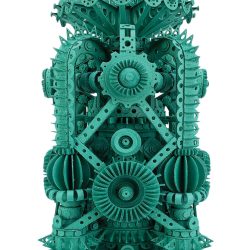Cracking Da Vinci’s Code
A new system will organize Leonardo’s untidy artifacts.

UW researchers will use a camera system and sophisticated algorithms to date Leonardo’s drawings. Wellcome Images
Leonardo da Vinci may have been a genius, but he was also a hot mess, at least in terms of organizing his works. When he died in 1519, the Renaissance master left behind 7,000 pages of undated drawings, scientific observations, and personal journals, more or less jumbled up in a box. Ever since, art historians have tried to make an accurate timeline of the various documents now held in collections across the world.
A new system developed by a UW–Madison engineer could help in that centuries-long effort.
William Sethares, a UW professor of electrical and computer engineering, and Elisa Ou MS’19, PhDx’24 are using a camera system and sophisticated algorithms to match the undated drawings and writings to others with established dates. The two are also working on a project dating the works of Dutch painter Rembrandt, and they believe their system is applicable to any artwork or document on preindustrial paper.
Idiosyncratic markings on paper made before the mid-19th century allow the researchers to group artworks from the same batch of paper and date the works if at least one is firmly dated. Seeing these markings with the naked eye is difficult, however, especially on delicate paper covered with ink, paint, or writing. That’s why Sethares helped develop a hardware and software system called the watermark imaging system, which can compare markings with others in a database to see if there is a match.
Published in the Spring 2024 issue



Comments
No comments posted yet.